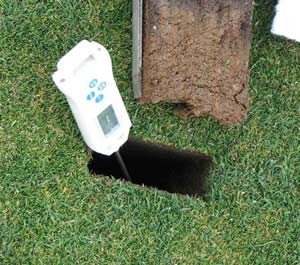Weather: Just An Excuse?
" What's wrong with our golf course, and I don't want to hear any excuses about the weather? " Believe it or not, this phrase has been uttered on several occasions this spring, even on the heels of a record-breaking winter (for some) and in the midst of a prolonged, unseasonably cool spring (as indicated by the persistent ' La Nina ' phenomenon in which cooler than normal surface waters in the Pacific Ocean parallel cooler temperatures across the Midwest). To equate the aforementioned question with on-going headline news reports, only those out of touch could justify in their minds asking top dollar for a home and expecting it to be sold in less than 30 days given the current market conditions. Unfortunately, this spring has yielded more severe weather events (i.e. hailstorms, tornadoes and flash flooding) than favorable golfing days for the fair-weather player. Consequently, golf course superintendents have been unduly pressured to produce better course conditions even though some of the practices will only help in the short-term and are generally risky for the turf's health over the long summer season.
 |
|
| Below normal soil temperatures have resulted in reduced turfgrass vigor and slow recovery from winterkill injury. |
To conduct our own investigation, let's look no further than the ground beneath us. The truth is typical spring growing conditions across the upper Mid-Continent Region have been delayed by as many as three weeks. To better understand, we need only a simple device - a thermometer. A common food testing thermometer found in any kitchen will actually suffice. Soil temperatures at the 2-inch depth (obtained by inserting a thermometer into the soil after removing a soil plug, as seen in the photo) during recent Turf Advisory Service visits consistently measure between 55°F and 58°F. As a point of reference, soil temperatures must rise into the 60's before vigorous cool-season turfgrass growth and seedling germination occurs.
Below normal soil temperatures have been especially difficult for golf courses that suffered winterkill damage, as turfgrass recovery and seeding efforts have been marginal at best. Fortunately, with warmer air temperatures on the horizon, soil temperatures will rise and improvements in turfgrass growth, density and color should soon follow suit. In looking for a bright side, disease activity has been suppressed by the cooler conditions and many courses have realized a very small savings in their fungicide budget that is, of course, quickly offset by the rapidly rising costs of fuel and fertilizer.
So, while some of you are wondering, "What's wrong with my course?" it might be a more appropriate time to compliment your golf course superintendent and maintenance staff for their diligent and timely efforts, especially since the courses that I have seen thus far are in better than expected condition given this unseasonable weather. This is due, in large part, to the admirable job of your superintendent and maintenance staff.
If you would like more information about a Turf Advisory Service visit, do not hesitate to contact either of the Mid-Continent regional offices: Ty McClellan at tmcclellan@usga.org or (630) 340-5853 or Bud White at budwhite@usga.org or (972) 662-1138.
![]()
